Horticulture Highlight: Lightning Survival
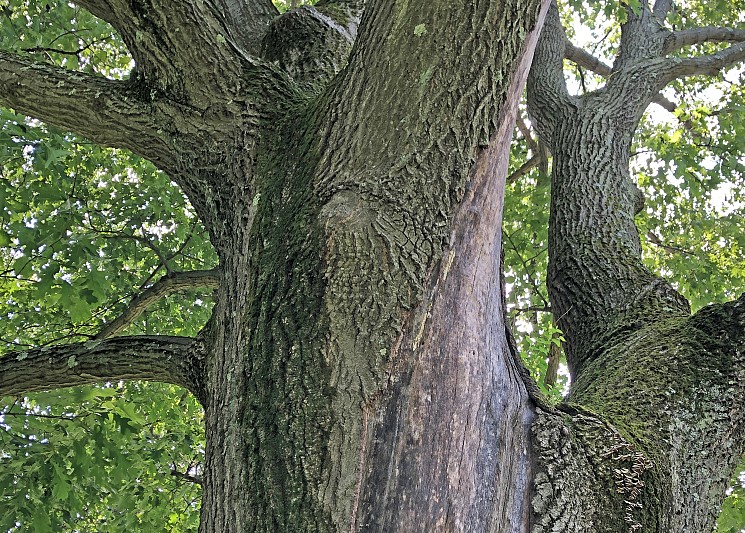
…the tree
aspires to the sky
one branch, cracked by lighting.
scrapes the earth…
-Grace Schulman
As beautiful as Mount Auburn is, our professional arborists and horticulturists constantly are coping with problems injuring and compromising plants’ health and/or lives. A cursory list of on-going concerns includes beech decline, viburnum leaf beetle, hemlock wooly adelgid, verticillium wilt, winter moth, fire blight, dogwood anthracnose, bronze birch borer, elm bark beetle, boxwood leaf miner, nectria canker, etc., etc. A comprehensive list of concerns could fill this whole page. Many of these conditions have been dealt with in the past and our staffs’ extensive knowledge help with prevention strategies, constant monitoring, early diagnosis and appropriate best practices treatments of countless biotic and abiotic plant health issues.
However, one abrupt, unforeseen, injurious agent is lightning. Relatively few trees struck by lightning will be completely shattered or disintegrated by the strike. Some struck trees nonetheless are killed immediately. Some may die later within the same year. Others may linger alive for years before declining in health primarily due to increased stress, secondary pests and/or other problems. We have one of the latter, a red oak, Quercus rubra on Mist Path, struck on July 9, 2016.
Beginning in clouds with electrical sparks created by negatively charged and positively charged particles, there are different types of lightning; intra-cloud lightning, cloud-to-cloud lightning, and cloud-to-ground lightning. Cloud-to-ground lightning represents an exchange of massive electric current and damages and kills thousands of trees annually. The National Lightning Detection Network (NLDN) reported 21 million cloud-to-ground strikes in the lower 48 states in 1999, this averages more than one per second, every second of the year. Various other sources report even higher averages per second worldwide.
Back to our red oak, Quercus rubra on Mist Path, one of five red oaks believed to be as old as the cemetery, with a trunk circumference of almost 14-feet. The morning after this tree was struck the obvious observable damage was a 10-12-inch, scar of missing bark running from the ground up the length of the trunk in a slightly spiral pattern. Most lightning passes through trees because water is a better conductor of electricity than air. Water in trees is concentrated in the cambium tissue just under the bark. Electricity surging through this water results in it boiling explosively, blasting off the bark. That morning we found pieces of its bark as far as 115-feet away from the tree. Shortly thereafter our arborists pruned out the major limb where the strike occurred.
…But if we got struck by lightning –
not a lot; say glanced, or shaved,
there was a chance (we heard)
it wouldn’t be so bad:
a little refreshing,
a little like La Vita Nuova
in a readable translation…
-Ange Mlinko
Paul Walker, Superintendent of Grounds, an arborist with almost forty years of experience here at Mount Auburn has been monitoring this tree since the lightning strike. He recalled that in his time here there have been 10 trees struck by lightning, including this one, and five of them have been oaks, 3 red oaks, one white oak and one black oak. Other trees struck were white pine, American ash, Douglas fir, black cherry and blue spruce. The spectrum of survivability from these 10 strikes ranges from one tree being killed instantly to another red oak lasting about 15 years before finally succumbing. Trees struck but surviving will suffer from a reduction in water movement capacity at the site of cambium loss, increased stress, lessened defensive capability in tolerating insects, fungi and disease. The lengthy wound on our red oak now measures 21-24-inches at its widest, and will continue to enlarge.
On a future visit to Mount Auburn, stop by and pay a tribute to this notable monarch displaying its will to survive.
We had so little, yet we had so much:
Thunder and lightning at the lightest touch.
-John M. Ridland

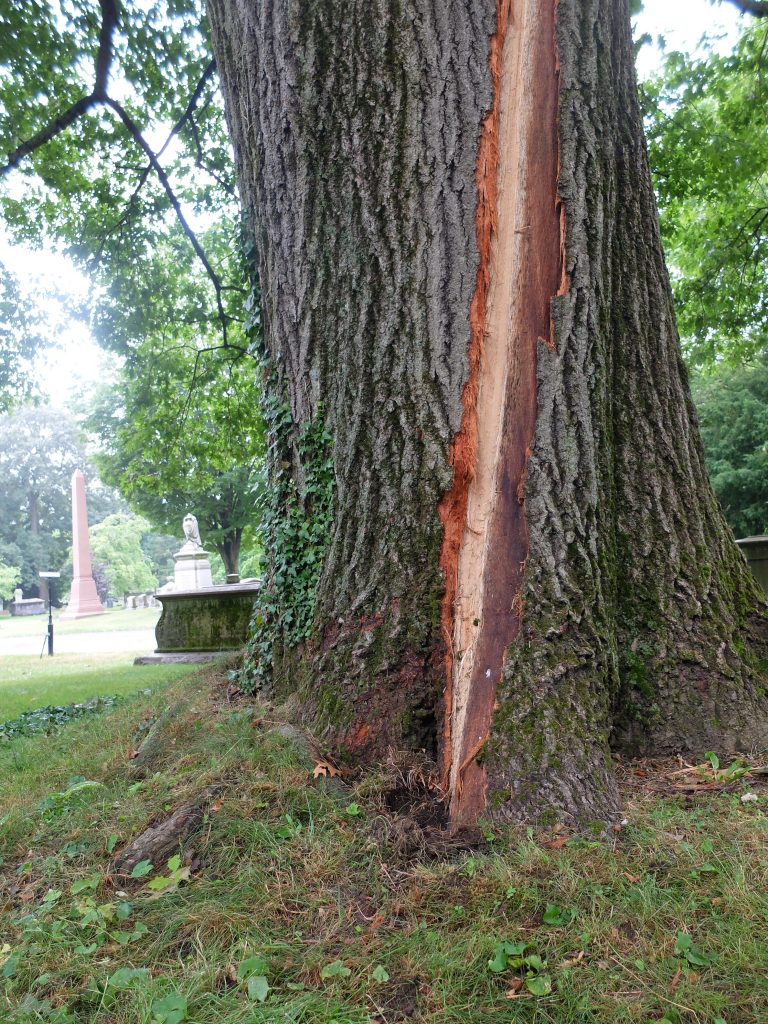
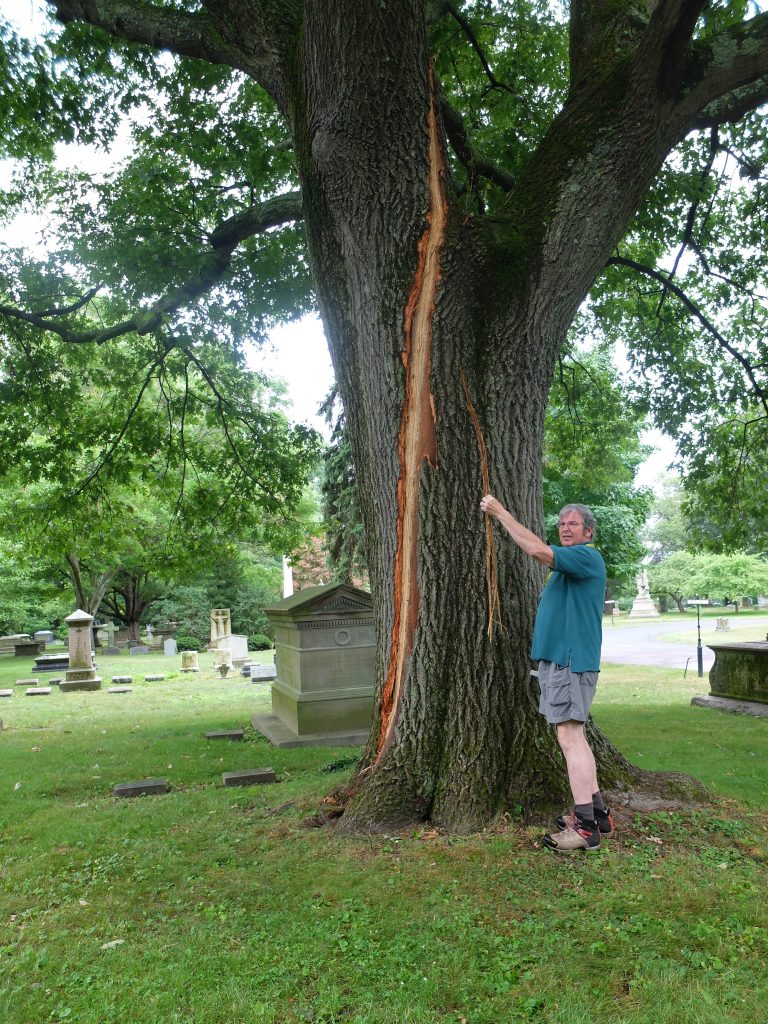
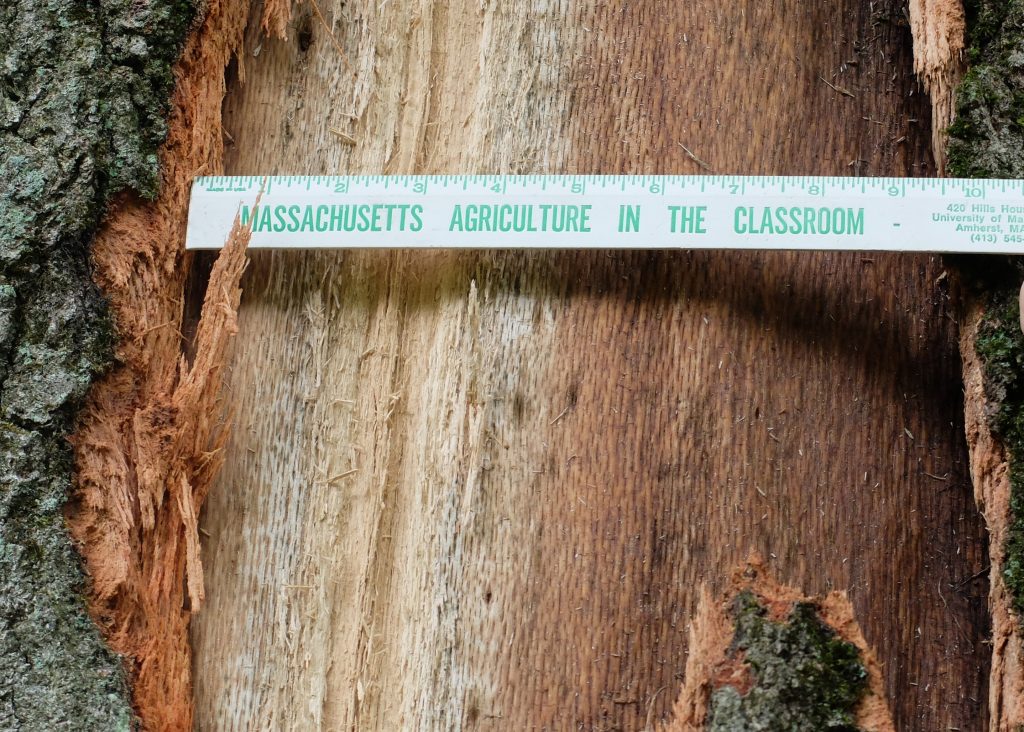
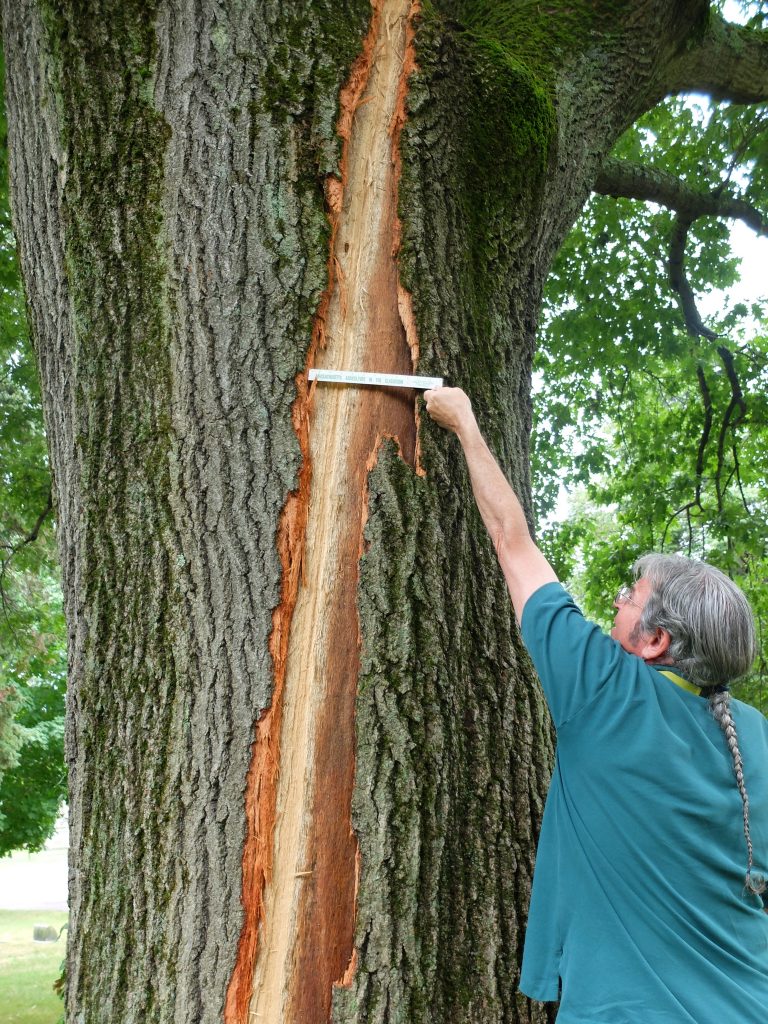
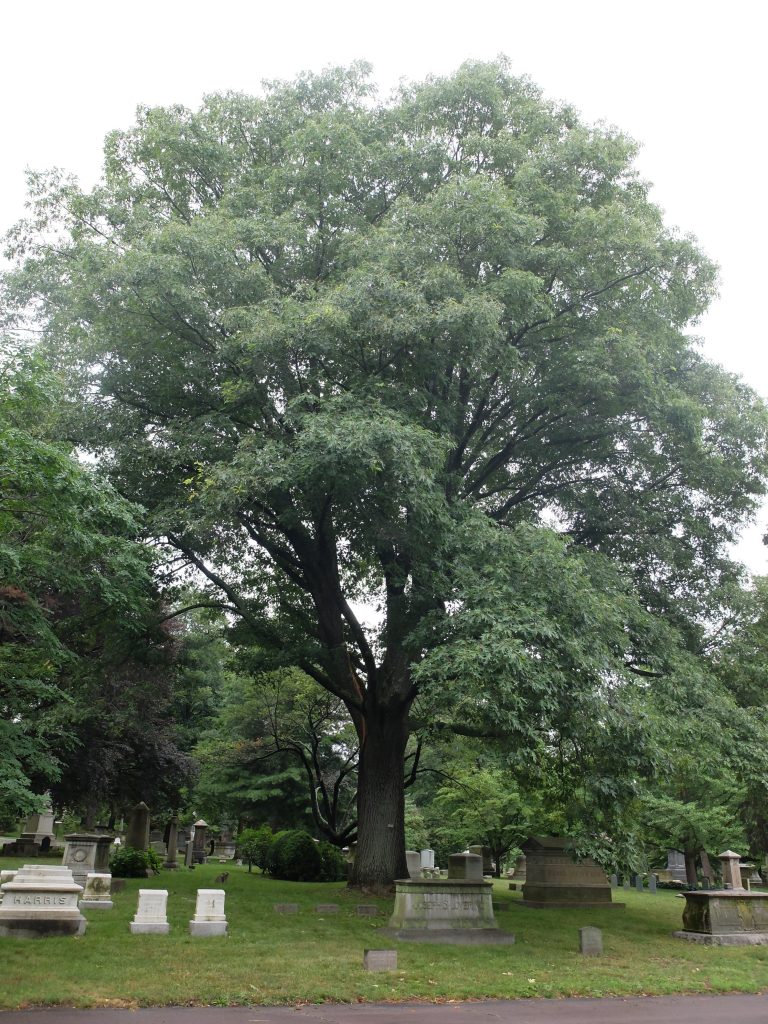
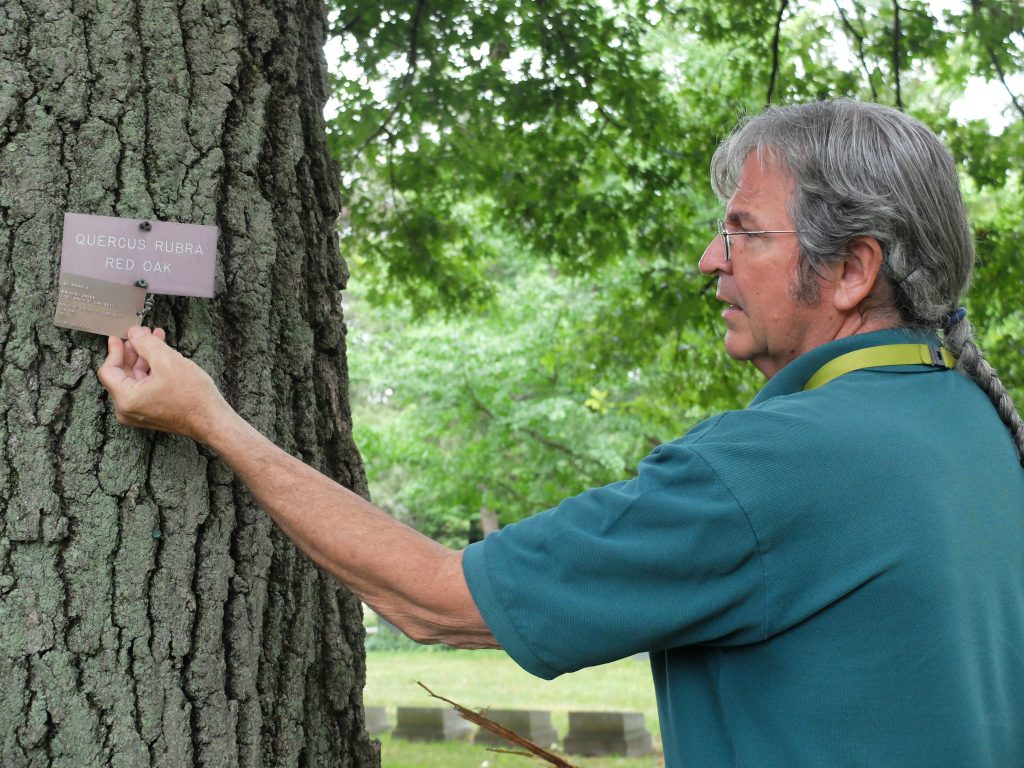

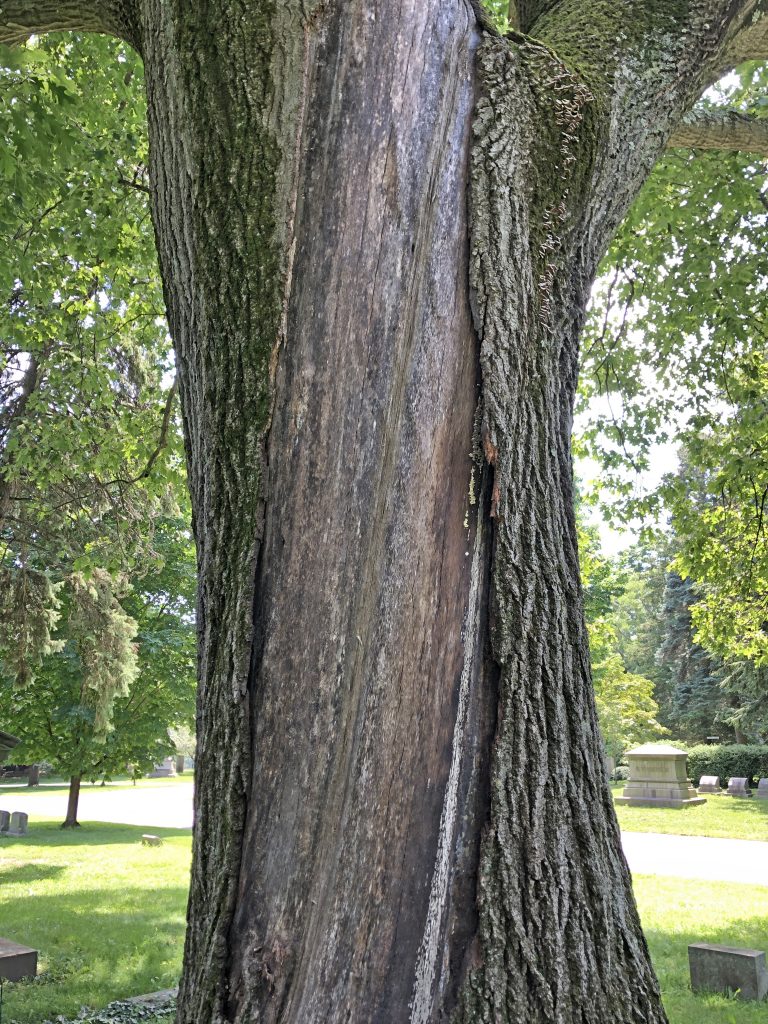
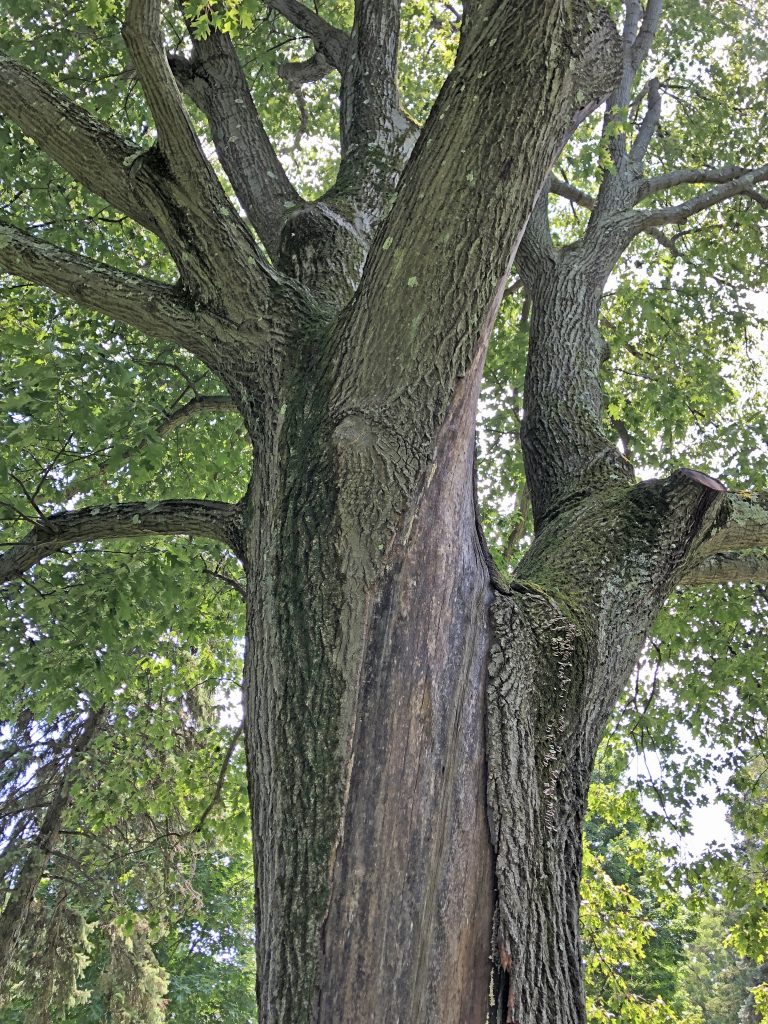
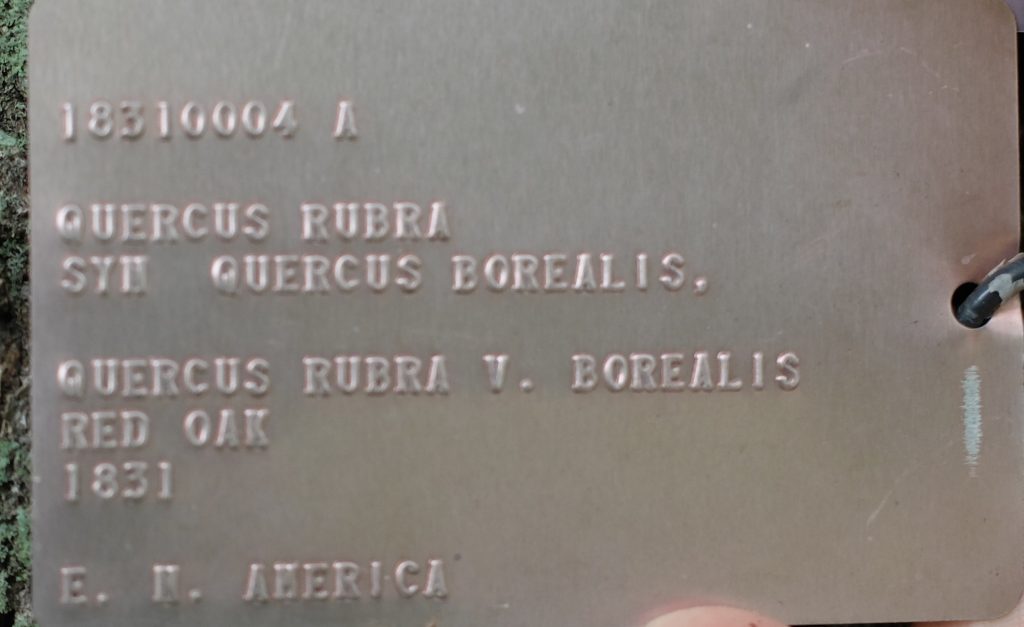
Leave a Reply